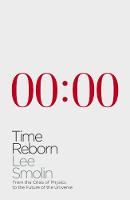Janice VanCleave's A+ Projects in Astronomy
Janice VanCleave's A+ Projects in Astronomy
Winning Experiments for Science Fairs and Extra Credit
VanCleave, Janice
John Wiley & Sons Inc
11/2001
224
Mole
Inglês
9780471328209
15 a 20 dias
346
Descrição não disponível.
Introduction.
Part I: Measurements.
1. Apparent Diameter: Observed Diameter of Celestial Bodies.
2. Angular Separation: Angular Distance between Celestial Bodies.
3. Altitude: Vertical Coordinate.
4. Azimuth: Horizontal Coordinate.
Part II: Optical Instruments.
5. Apertures: The Gathering of Light.
6. Diffraction: The Spreading of Light.
Part III: The Sun.
7. Sunspots: Cooler Surface Regions.
8. True Sun: How the Sun Appears to Move.
9. Seasons: Four Times of the Year.
Part IV: The Planets.
10. Solar System Scale: Miniature Model.
11. Barycenter: The Balancing Point.
12. Orbital Eccentricity: How Circular a Celestial Body's Path Is.
13. Planetary Phenomena: Planetary Movement Relative to Earth.
14. Orbital Period: Time of Revolution.
15. Spheroids: Bulging Bodies.
16. Rotation: The Spinning of Celestial Bodies.
17. Phases of Venus: Changes in Shape and Size.
Part V: Moons.
18. Moon Phase: The Moon's Visible Lighted Surface.
19. Eclipses: Shadows of Earth and the Moon.
20. Craters, Maria, and Highlands: The Moon's Surface Features.
21. Galilean Satellites: Jupiter's Largest Moons.
Part VI: Stars.
22. Celestial Sphere: Sky Globe.
23. Zodiac Band: Background for the Ecliptic.
24. Circumpolar: Stars above the Horizon.
25. Star Clock: Star Positions Indicate Time.
26. Star Systems: Multiple Stars.
27. Apparent Magnitude: Apparent Star Brightness.
28. Parallax: Apparent Shift of an Object.
Part VII: Meteors and Artificial Satellites.
29. Meteors: Streaks of Light in the Sky .
30. Artificial Satellites: Man-made Orbiters.
Appendix 1: Random Error of Measurement.
Appendix 2: Relative Error: Percentage Error.
Appendix 3: Planet Facts and Figures.
Appendix 4: Tangent Table.
Appendix 5: Sources of Scientific Supplies.
Glossary.
Index.
Part I: Measurements.
1. Apparent Diameter: Observed Diameter of Celestial Bodies.
2. Angular Separation: Angular Distance between Celestial Bodies.
3. Altitude: Vertical Coordinate.
4. Azimuth: Horizontal Coordinate.
Part II: Optical Instruments.
5. Apertures: The Gathering of Light.
6. Diffraction: The Spreading of Light.
Part III: The Sun.
7. Sunspots: Cooler Surface Regions.
8. True Sun: How the Sun Appears to Move.
9. Seasons: Four Times of the Year.
Part IV: The Planets.
10. Solar System Scale: Miniature Model.
11. Barycenter: The Balancing Point.
12. Orbital Eccentricity: How Circular a Celestial Body's Path Is.
13. Planetary Phenomena: Planetary Movement Relative to Earth.
14. Orbital Period: Time of Revolution.
15. Spheroids: Bulging Bodies.
16. Rotation: The Spinning of Celestial Bodies.
17. Phases of Venus: Changes in Shape and Size.
Part V: Moons.
18. Moon Phase: The Moon's Visible Lighted Surface.
19. Eclipses: Shadows of Earth and the Moon.
20. Craters, Maria, and Highlands: The Moon's Surface Features.
21. Galilean Satellites: Jupiter's Largest Moons.
Part VI: Stars.
22. Celestial Sphere: Sky Globe.
23. Zodiac Band: Background for the Ecliptic.
24. Circumpolar: Stars above the Horizon.
25. Star Clock: Star Positions Indicate Time.
26. Star Systems: Multiple Stars.
27. Apparent Magnitude: Apparent Star Brightness.
28. Parallax: Apparent Shift of an Object.
Part VII: Meteors and Artificial Satellites.
29. Meteors: Streaks of Light in the Sky .
30. Artificial Satellites: Man-made Orbiters.
Appendix 1: Random Error of Measurement.
Appendix 2: Relative Error: Percentage Error.
Appendix 3: Planet Facts and Figures.
Appendix 4: Tangent Table.
Appendix 5: Sources of Scientific Supplies.
Glossary.
Index.
Este título pertence ao(s) assunto(s) indicados(s). Para ver outros títulos clique no assunto desejado.
experiments; allnew collection; firstrate science; fair; hard time; good idea; science; class; extra credit; universe; projects; janice; astronomy; equipment; best; wont involve; complicated; part; guide; stepbystep; explores; ideas; different
Introduction.
Part I: Measurements.
1. Apparent Diameter: Observed Diameter of Celestial Bodies.
2. Angular Separation: Angular Distance between Celestial Bodies.
3. Altitude: Vertical Coordinate.
4. Azimuth: Horizontal Coordinate.
Part II: Optical Instruments.
5. Apertures: The Gathering of Light.
6. Diffraction: The Spreading of Light.
Part III: The Sun.
7. Sunspots: Cooler Surface Regions.
8. True Sun: How the Sun Appears to Move.
9. Seasons: Four Times of the Year.
Part IV: The Planets.
10. Solar System Scale: Miniature Model.
11. Barycenter: The Balancing Point.
12. Orbital Eccentricity: How Circular a Celestial Body's Path Is.
13. Planetary Phenomena: Planetary Movement Relative to Earth.
14. Orbital Period: Time of Revolution.
15. Spheroids: Bulging Bodies.
16. Rotation: The Spinning of Celestial Bodies.
17. Phases of Venus: Changes in Shape and Size.
Part V: Moons.
18. Moon Phase: The Moon's Visible Lighted Surface.
19. Eclipses: Shadows of Earth and the Moon.
20. Craters, Maria, and Highlands: The Moon's Surface Features.
21. Galilean Satellites: Jupiter's Largest Moons.
Part VI: Stars.
22. Celestial Sphere: Sky Globe.
23. Zodiac Band: Background for the Ecliptic.
24. Circumpolar: Stars above the Horizon.
25. Star Clock: Star Positions Indicate Time.
26. Star Systems: Multiple Stars.
27. Apparent Magnitude: Apparent Star Brightness.
28. Parallax: Apparent Shift of an Object.
Part VII: Meteors and Artificial Satellites.
29. Meteors: Streaks of Light in the Sky .
30. Artificial Satellites: Man-made Orbiters.
Appendix 1: Random Error of Measurement.
Appendix 2: Relative Error: Percentage Error.
Appendix 3: Planet Facts and Figures.
Appendix 4: Tangent Table.
Appendix 5: Sources of Scientific Supplies.
Glossary.
Index.
Part I: Measurements.
1. Apparent Diameter: Observed Diameter of Celestial Bodies.
2. Angular Separation: Angular Distance between Celestial Bodies.
3. Altitude: Vertical Coordinate.
4. Azimuth: Horizontal Coordinate.
Part II: Optical Instruments.
5. Apertures: The Gathering of Light.
6. Diffraction: The Spreading of Light.
Part III: The Sun.
7. Sunspots: Cooler Surface Regions.
8. True Sun: How the Sun Appears to Move.
9. Seasons: Four Times of the Year.
Part IV: The Planets.
10. Solar System Scale: Miniature Model.
11. Barycenter: The Balancing Point.
12. Orbital Eccentricity: How Circular a Celestial Body's Path Is.
13. Planetary Phenomena: Planetary Movement Relative to Earth.
14. Orbital Period: Time of Revolution.
15. Spheroids: Bulging Bodies.
16. Rotation: The Spinning of Celestial Bodies.
17. Phases of Venus: Changes in Shape and Size.
Part V: Moons.
18. Moon Phase: The Moon's Visible Lighted Surface.
19. Eclipses: Shadows of Earth and the Moon.
20. Craters, Maria, and Highlands: The Moon's Surface Features.
21. Galilean Satellites: Jupiter's Largest Moons.
Part VI: Stars.
22. Celestial Sphere: Sky Globe.
23. Zodiac Band: Background for the Ecliptic.
24. Circumpolar: Stars above the Horizon.
25. Star Clock: Star Positions Indicate Time.
26. Star Systems: Multiple Stars.
27. Apparent Magnitude: Apparent Star Brightness.
28. Parallax: Apparent Shift of an Object.
Part VII: Meteors and Artificial Satellites.
29. Meteors: Streaks of Light in the Sky .
30. Artificial Satellites: Man-made Orbiters.
Appendix 1: Random Error of Measurement.
Appendix 2: Relative Error: Percentage Error.
Appendix 3: Planet Facts and Figures.
Appendix 4: Tangent Table.
Appendix 5: Sources of Scientific Supplies.
Glossary.
Index.
Este título pertence ao(s) assunto(s) indicados(s). Para ver outros títulos clique no assunto desejado.





